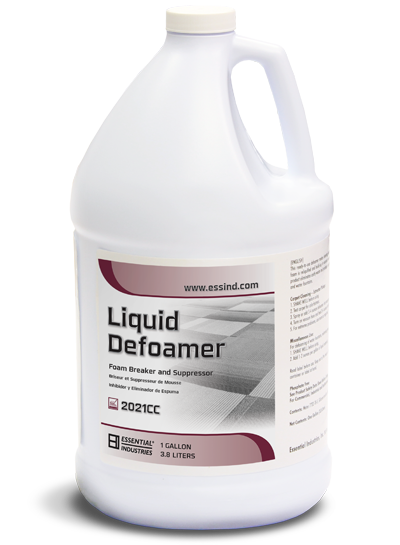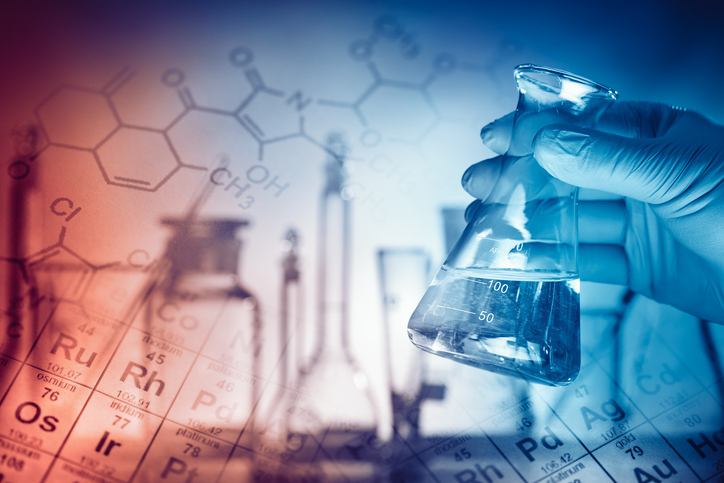How to Pick the Most Suitable Chemical Defoamer for Your Unique Requirements
How to Pick the Most Suitable Chemical Defoamer for Your Unique Requirements
Blog Article
Checking Out the Benefits of a Chemical Defoamer in Production and Manufacturing
The combination of chemical defoamers in production and production processes offers a calculated benefit by dealing with one of the consistent challenges in commercial procedures: foam control. As suppliers make every effort to enhance processes and boost client contentment, the function of chemical defoamers comes to be increasingly vital.
Significance of Foam Control
While the presence of foam in making procedures can sometimes seem safe, efficient foam control is essential for optimizing operational effectiveness and product high quality. Foam can disrupt numerous stages of production, causing ineffectiveness that might extend and increase expenses processing times. In markets such as food and beverage, drugs, and chemicals, unchecked foam can obstruct devices, interrupt automated systems, and eventually result in product incongruities.

Applying efficient foam control approaches not only enhances productivity but likewise sustains regulatory compliance in sectors where foam can lead to environmental problems. By using chemical defoamers, producers can minimize these obstacles, guaranteeing smoother operations and higher-quality final result. Inevitably, focusing on foam control is a vital aspect of manufacturing that can yield significant advantages in terms of efficiency, product, and safety dependability.
Kinds of Chemical Defoamers
What kinds of chemical defoamers are readily available for producing processes, and exactly how do they vary in application? Chemical defoamers can be categorized into three major kinds: silicone-based, natural, and not natural defoamers. - Chemical Defoamer

Organic defoamers, commonly originated from fatty acids or natural oils, are efficient in a variety of applications, including food and drink production. They are usually favored for their lower poisoning and environmental influence, ensuring compliance with industry regulations.

Each kind of defoamer serves unique functions based on the chemical structure and the details requirements of the manufacturing process, allowing producers to select one of the most ideal alternative for their particular requirements.

Benefits in Manufacturing Efficiency
Chemical defoamers play a crucial role in enhancing manufacturing efficiency by properly regulating foam generation during various processes. Foam can hinder manufacturing prices, disrupt equipment procedure, and bring about costly downtime. By incorporating chemical defoamers, manufacturers can minimize these problems, making sure smoother process and raised general efficiency.
Making use of chemical defoamers helps optimize the operational efficiency of tools such as pumps, reactors, and mixers. With minimized foam, these equipments can run at their intended ability, reducing the risk of overflow and making it possible for constant processing. This causes much better resource utilization and greater throughput.
In addition, chemical defoamers facilitate faster handling times by reducing the moment required for foam removal. This velocity can significantly influence manufacturing routines, allowing producers to satisfy client demand a lot more successfully. Additionally, using defoamers adds to go to these guys reduce power usage, as machinery runs extra effectively with reduced foam interference.
Effect On Item High Quality
Foam control is not only necessary for keeping effectiveness in producing procedures however also plays a considerable duty in making sure product top quality. Excessive foam can present air into solutions, bring about disparities in the end product. This can materialize as issues such as voids, unequal appearances, or poor finishes, which weaken the desired high quality and performance of the item.
In addition, foam can impede the homogeneity of blends, resulting in unequal distribution of active components. In sectors such as finishes, cosmetics, and food manufacturing, this can result in variations in color, taste, and total effectiveness. By utilizing a chemical defoamer, manufacturers can reduce these dangers, making certain that items satisfy strict quality requirements.
Additionally, regulating foam can improve the stability of solutions and suspensions, which is critical for guaranteeing shelf-life and consumer satisfaction. With enhanced product uniformity and lowered issues, manufacturers can achieve higher standards of quality assurance, eventually leading to increased client depend on and click this site brand name commitment.
Cost-Effectiveness and ROI
Reliable foam control not just enhances product quality however likewise adds dramatically to the general cost-effectiveness of manufacturing procedures. Using chemical defoamers decreases foam-related problems, which can or else result in production hold-ups, devices breakdowns, and increased energy intake. By decreasing foam, suppliers can enhance their processes, leading to greater throughput and performance.
Spending in chemical defoamers can produce a substantial roi (ROI) The first expenses connected with these additives are frequently countered by the savings realized from reduced downtime and improved product return. In addition, boosted product top quality can news minimize waste and revamp costs, additionally reinforcing financial efficiency.
In enhancement, reliable foam control can result in lowered water and energy usage, adding to lower operational prices. This is especially essential in sectors where resource efficiency is extremely important. By incorporating chemical defoamers into their processes, suppliers can accomplish long-lasting financial savings while keeping competitive prices in the market.
Conclusion
In verdict, the integration of chemical defoamers in production and production procedures is crucial for maximizing operational performance and improving item high quality. The benefits offered by chemical defoamers not just sustain regulatory compliance however likewise supply an affordable edge in the production landscape.
The combination of chemical defoamers in manufacturing and production procedures provides a calculated advantage by addressing one of the consistent difficulties in industrial operations: foam control.While the presence of foam in producing procedures can often appear harmless, reliable foam control is important for optimizing operational performance and product quality.Chemical defoamers play an important duty in improving manufacturing performance by properly controlling foam generation throughout different processes.Additionally, chemical defoamers promote faster processing times by reducing the time required for foam removal. In addition, the use of defoamers adds to lower energy usage, as machinery operates extra effectively with reduced foam disturbance.
Report this page